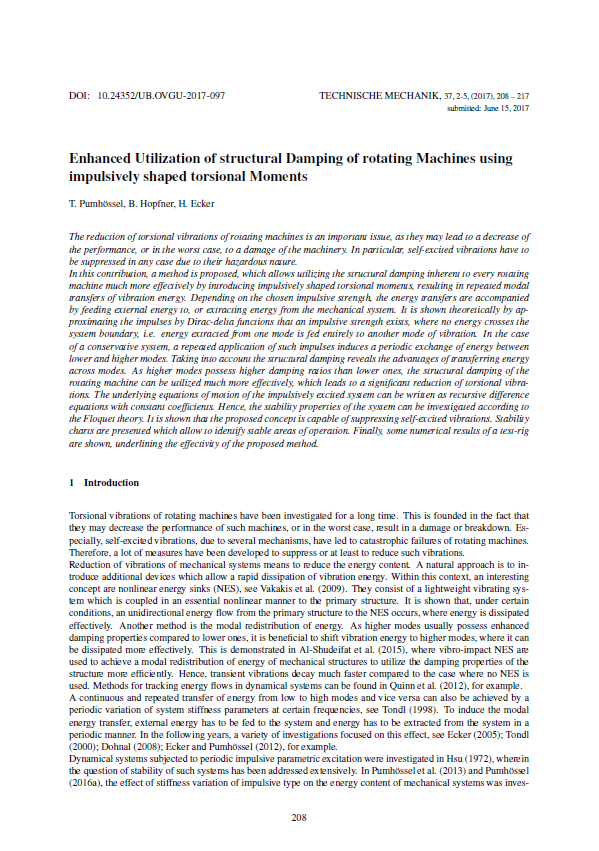Enhanced Utilization of structural Damping of rotating Machines using impulsively shaped torsional Moments
DOI:
https://doi.org/10.24352/UB.OVGU-2017-097Abstract
The reduction of torsional vibrations of rotating machines is an important issue, as they may lead to a decrease of the performance, or in the worst case, to a damage of the machinery. In particular, self-excited vibrations have to be suppressed in any case due to their hazardous nature. In this contribution, a method is proposed, which allows utilizing the structural damping inherent to every rotating machine much more effectively by introducing impulsively shaped torsional moments, resulting in repeated modal transfers of vibration energy. Depending on the chosen impulsive strength, the energy transfers are accompanied by feeding external energy to, or extracting energy from the mechanical system. It is shown theoretically by approximating the impulses by Dirac-delta functions that an impulsive strength exists, where no energy crosses the system boundary, i.e. energy extracted from one mode is fed entirely to another mode of vibration. In the case of a conservative system, a repeated application of such impulses induces a periodic exchange of energy between lower and higher modes. Taking into account the structural damping reveals the advantages of transferring energy across modes. As higher modes possess higher damping ratios than lower ones, the structural damping of the rotating machine can be utilized much more effectively, which leads to a significant reduction of torsional vibrations. The underlying equations of motion of the impulsively excited system can be written as recursive difference equations with constant coefficients. Hence, the stability properties of the system can be investigated according to the Floquet theory. It is shown that the proposed concept is capable of suppressing self-excited vibrations. Stability charts are presented which allow to identify stable areas of operation. Finally, some numerical results of a test-rig are shown, underlining the effectivity of the proposed method.





